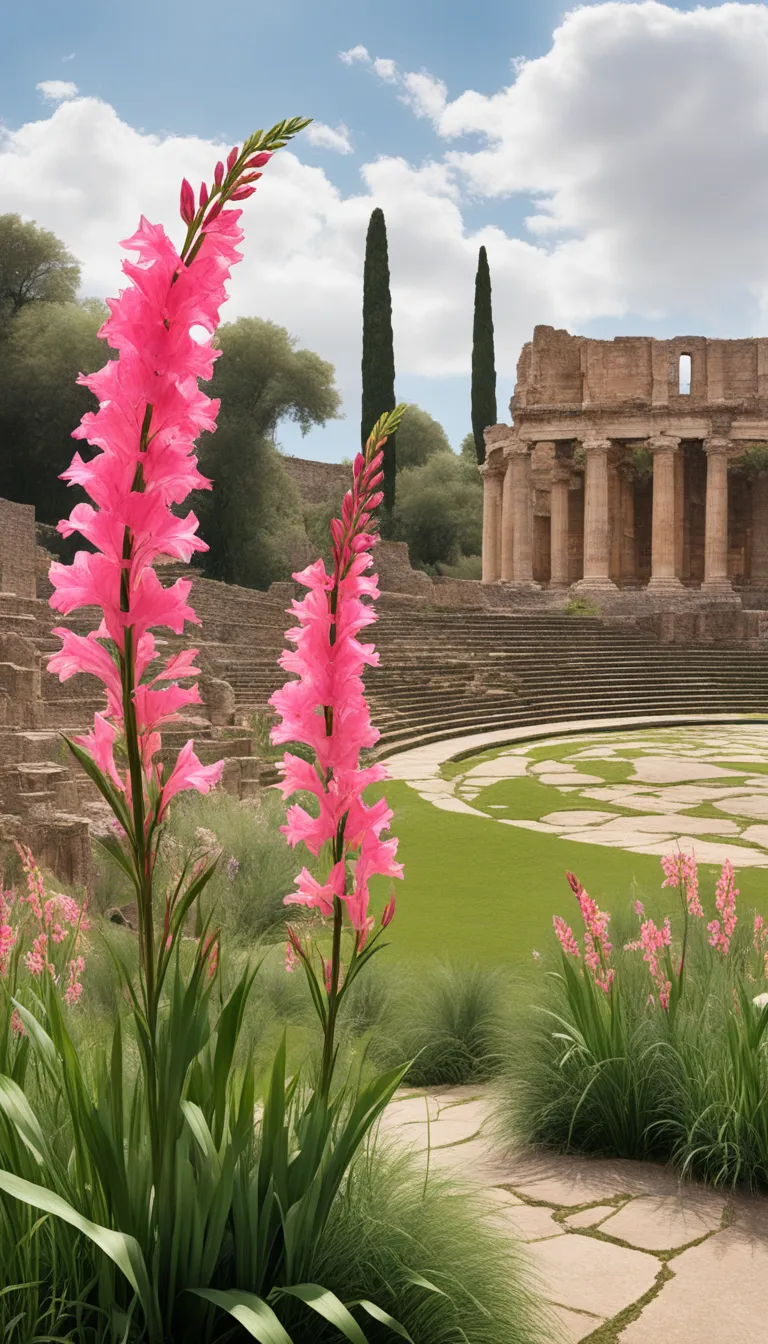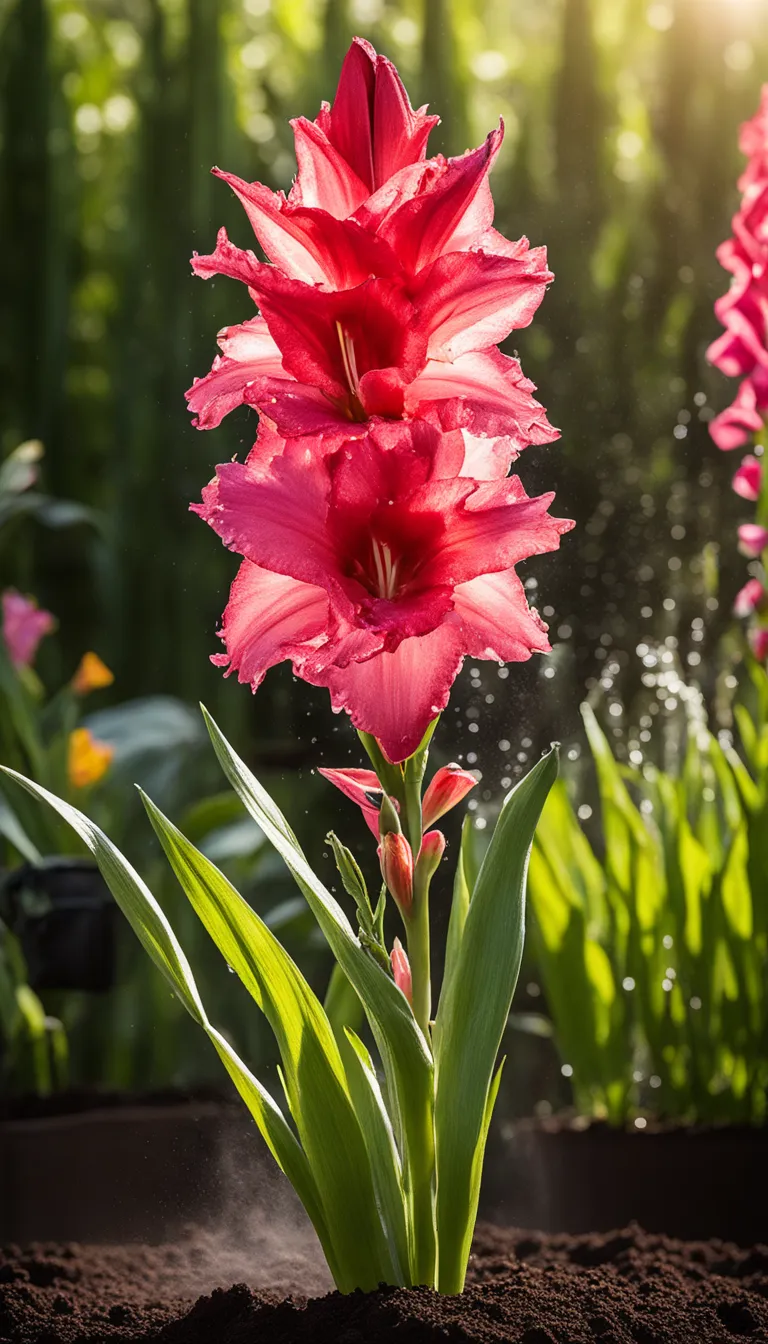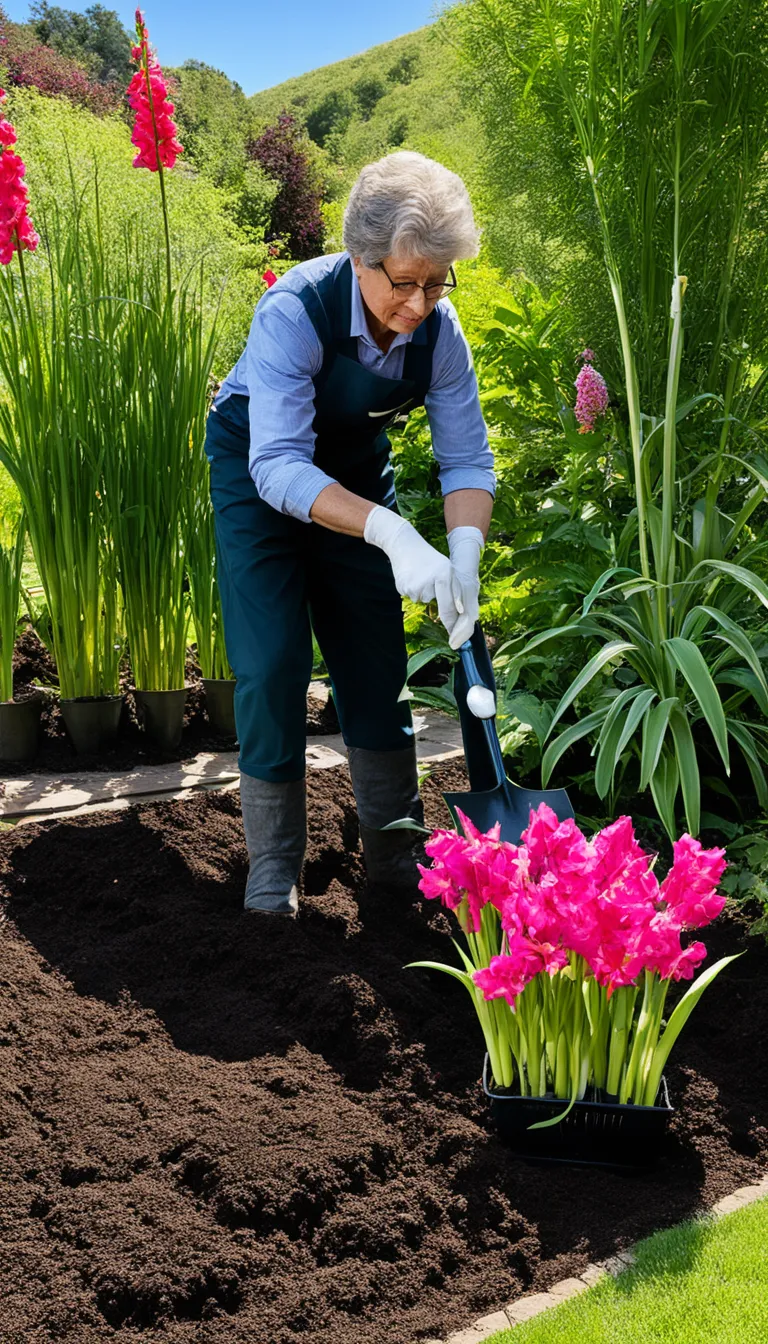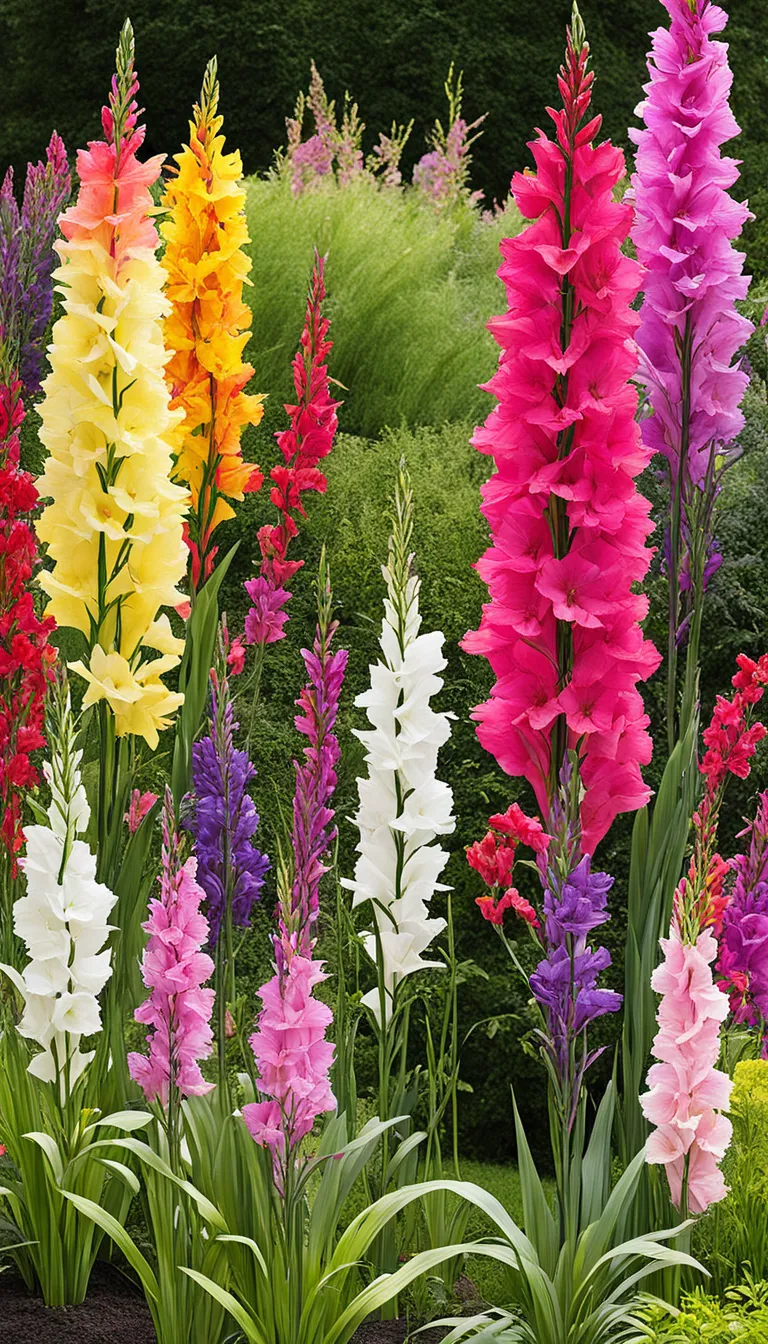Gladiolus, known for their striking, tall flowers, are a garden favorite. Bursting with surprise and explosion of colors, these majestic blooms stand proudly in any landscape. This guide explores their care, varieties, and planting tips, ensuring that your garden becomes a spectacle of vibrancy and height.
Originating from Africa, the Mediterranean, and Asia, Gladiolus has a rich history intertwined with the culture and art of many civilizations. Often referred to as the ‘sword lily’ due to its sharp leaves, this plant’s name is derived from the Latin word ‘gladius’, meaning sword. Its blossoms are not only a symbol of strength but also represent infatuation, telling the receiver they have pierced the giver’s heart with passion.
Gladiolus come in a plethora of varieties, each with its unique charm and color palette. From the purest whites to the deepest reds, there’s a shade for every mood and occasion. These flowers make for stunning cut arrangements and are a popular choice for summer events and celebrations. Whether you’re an experienced gardener or a green-thumbed novice, growing Gladiolus can add an element of drama and beauty to your outdoor space.
Let’s dive into the world of Gladiolus and learn how to nurture these dramatic and eye-catching blooms. With the right care, you can enjoy their splendor year after year, as they surprisingly return to grace your garden with their explosive presence.

What is Gladiolus?
Gladiolus, commonly referred to as ‘glads’, is not just any garden plant; it’s a botanical treasure with a story to tell. These eye-catching perennials belong to the Iris family and are admired for their beautiful, sword-like leaves and impressive spikes of flowers that come in a rainbow of colors. But did you know that they are not just pretty faces? Gladiolus has a rich history that dates back to ancient times, where they were associated with gladiators and represented strength and moral integrity.
The name ‘Gladiolus’ comes from the Latin word ‘gladius’, meaning sword, which is quite fitting considering their leaf shape. With over 260 species, these flowers have been cultivated and hybridized to produce a wide variety of stunning options for gardeners and floral enthusiasts alike. If you’re looking to add a touch of drama and height to your garden, gladiolus could be the perfect choice. They’re also a florist’s dream, often used in grand bouquets and ornate arrangements due to their impressive size and vivid colors.
- Origin: Native to South Africa, Mediterranean Europe, and the Middle East.
- Blooming Season: Summer into fall, a time when many gardens are in need of a color boost.
- Symbolism: Gladiolus are often associated with strength of character, faithfulness, and honor.
Whether you’re a seasoned gardener or a curious beginner, understanding the essence of Gladiolus is the first step towards embracing these majestic summer blooms in your own backyard. So, are you ready to delve into the world of gladiolus and let their splendor take your breath away? Let’s get started!

How to Care for Gladiolus?
Caring for Gladiolus is a delightful task for any gardener looking to add a splash of drama to their landscape. These summer-blooming beauties thrive with the right mix of sunlight, water, and soil conditions. So, how do you ensure your Gladiolus are not just surviving, but flourishing?
First and foremost, sunlight is crucial. Gladiolus love the sun, and for good measure! Position them in a spot where they can bask in full sunlight for at least 6-8 hours a day. This will ensure they grow tall and strong, with vibrant blooms that can withstand the surprise of a summer breeze.
Next, let’s talk about watering. These plants prefer a consistent watering schedule. During the growing season, keep the soil evenly moist but not waterlogged. An explosion of color is what we’re after, not a swampy mess! A good rule of thumb is to water once a week, or more frequently during particularly hot or dry spells.
Now, the soil. Gladiolus aren’t too picky, but they do prefer well-draining soil. If you’re working with heavy clay, consider amending it with sand or organic matter to improve drainage. A pH between 6.5 and 7.0 is ideal for these floral fireworks.
- Sunlight: Full sun (6-8 hours daily)
- Watering: Consistent, weekly watering; adjust based on weather conditions
- Soil: Well-draining, with a pH of 6.5-7.0
Remember, the care you give to your Gladiolus will be directly reflected in their performance. With these tips, you’re well on your way to creating a stunning display that will be the envy of the neighborhood. Happy gardening!

Planting Gladiolus
When it comes to planting Gladiolus, timing and technique are key for a show-stopping display. These summer bloomers can create an explosion of color in your garden, but they need a little bit of know-how to thrive. Let’s dig into the essentials of planting these majestic flowers.
Choosing the Right Time: The ideal time to plant Gladiolus bulbs is in the spring, after the danger of frost has passed. In warmer climates, you can even plant them in early autumn. The goal is to plant them at a time that allows for their full growth cycle before the first frost of the next winter.
Location, Location, Location: Gladiolus love the sun! Choose a spot in your garden that receives full sunlight for the majority of the day. This exposure is crucial for the development of strong stems and vibrant blooms.
Soil Preparation: These flowers prefer well-drained soil. You can improve drainage by adding sand or compost to the planting area. The ideal pH level for the soil should be between 6.0 and 6.5.
Planting the Bulbs: Now, for the fun part! Follow these steps to plant your Gladiolus bulbs:
- Dig a trench about 4 to 6 inches deep.
- Place the bulbs with the pointed end facing up, spaced about 5 inches apart.
- Cover with soil and press down gently to eliminate air pockets.
- Water the area thoroughly to settle the bulbs.
Aftercare: Water your Gladiolus regularly, especially during dry spells. A layer of mulch can help retain moisture and keep weeds at bay. As they grow, you may need to stake the taller varieties to prevent them from toppling over.
By following these steps, you’re setting the stage for a truly dramatic summer spectacle. Gladiolus can take your garden from ordinary to extraordinary with their towering spires of color. So, why not give them a try and enjoy the surprise of their bloom?





